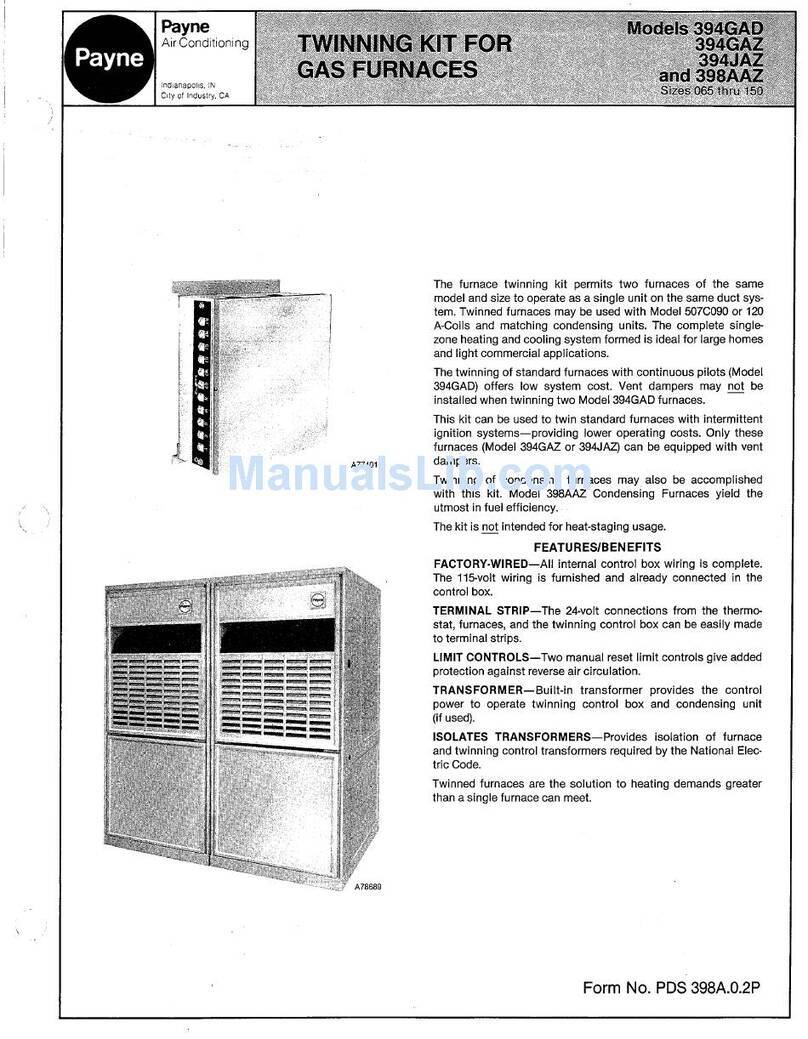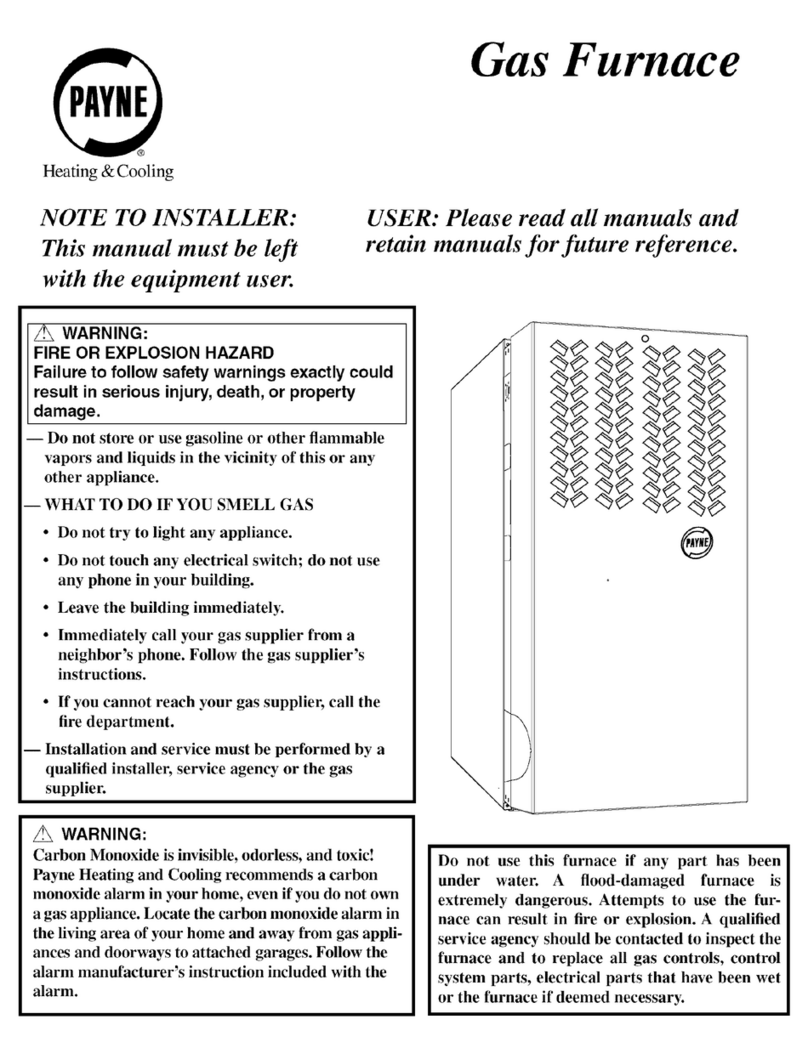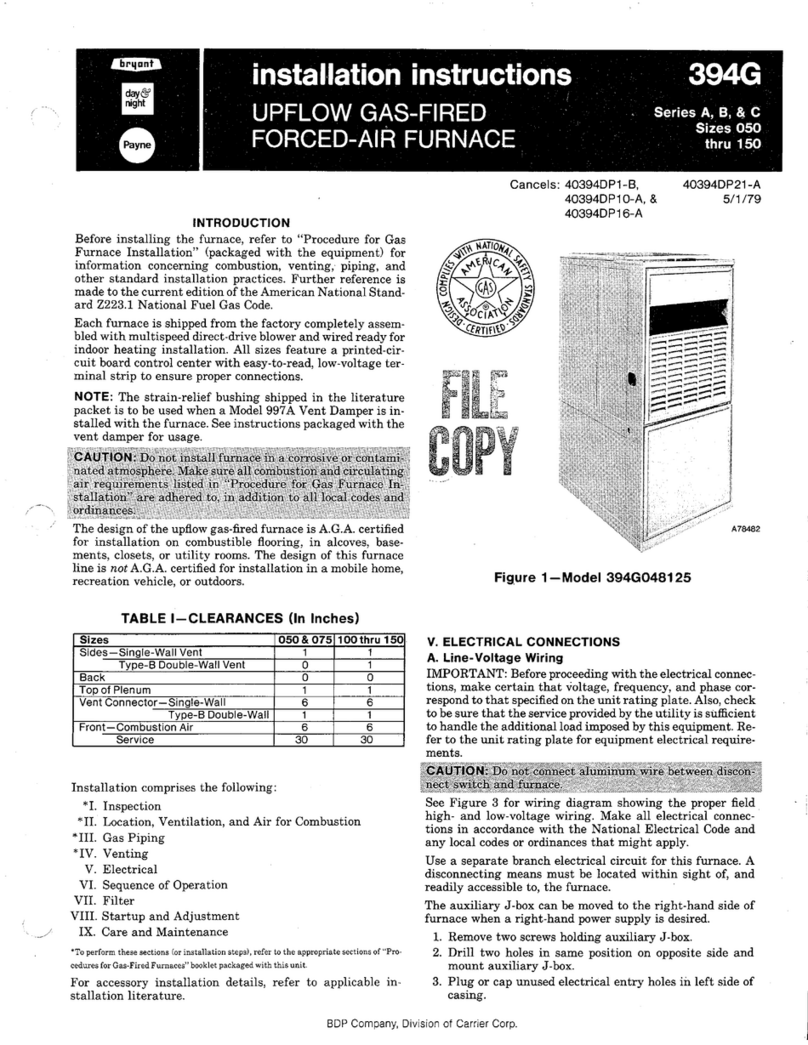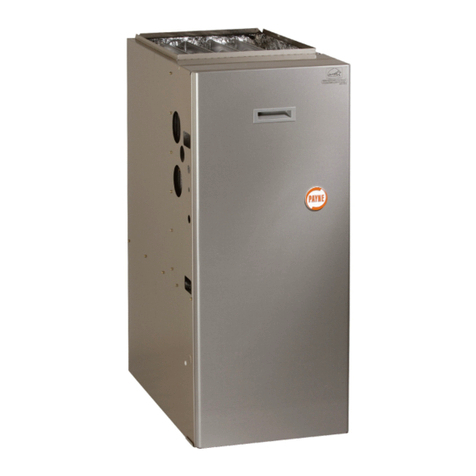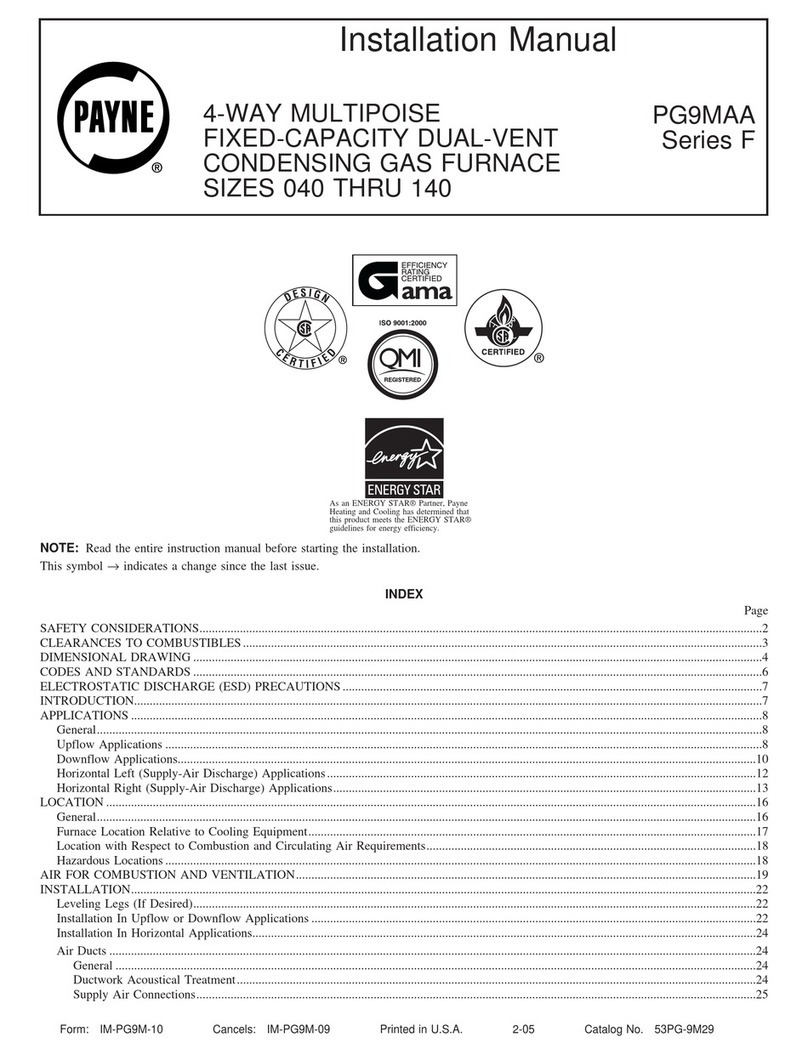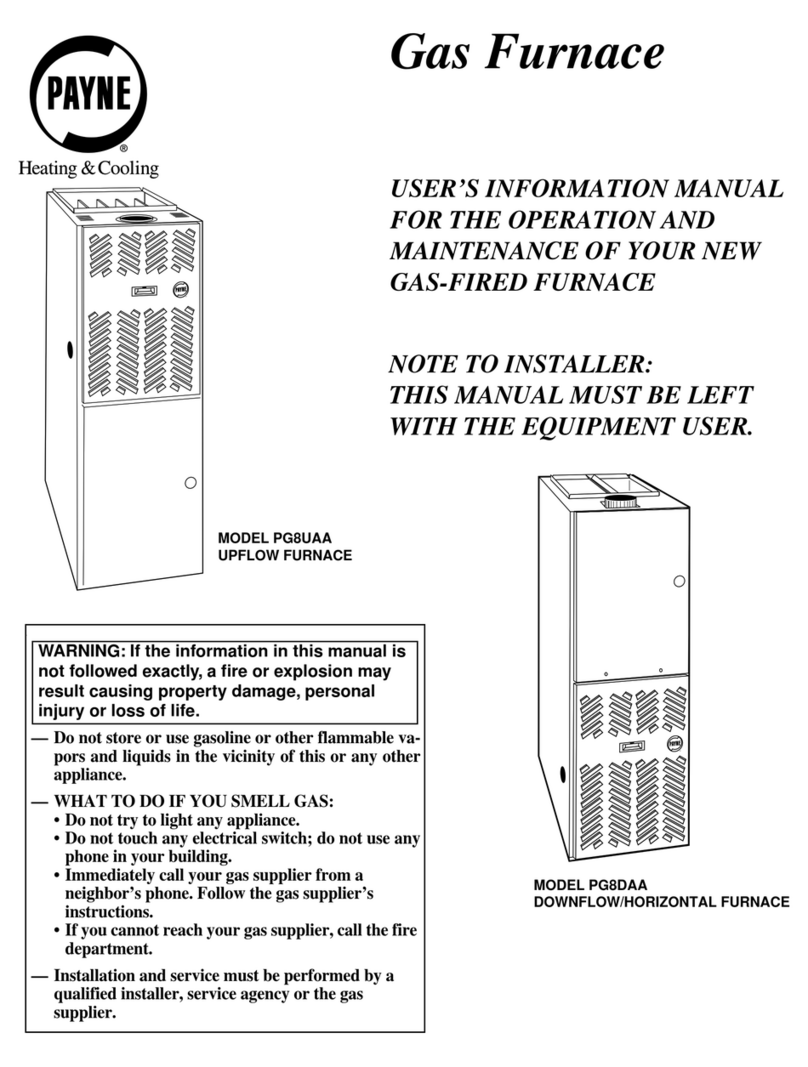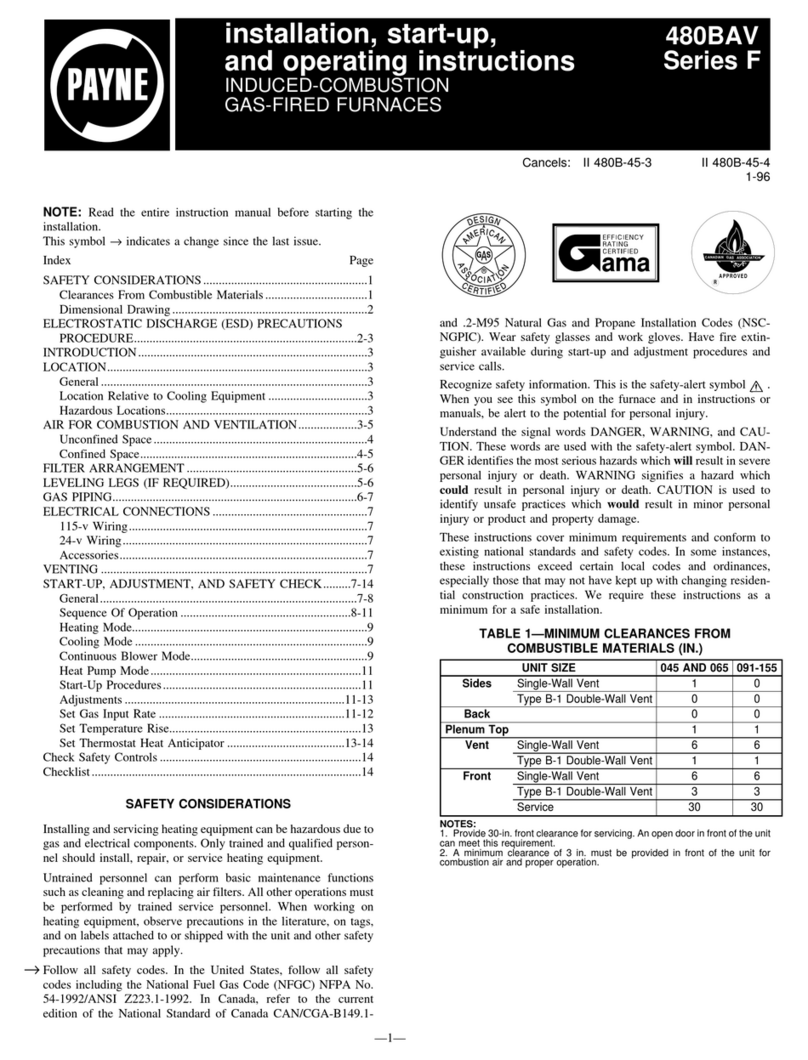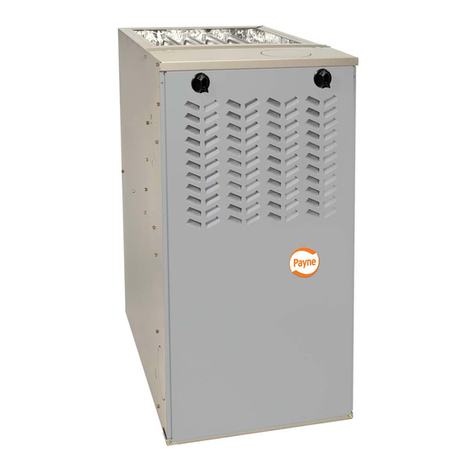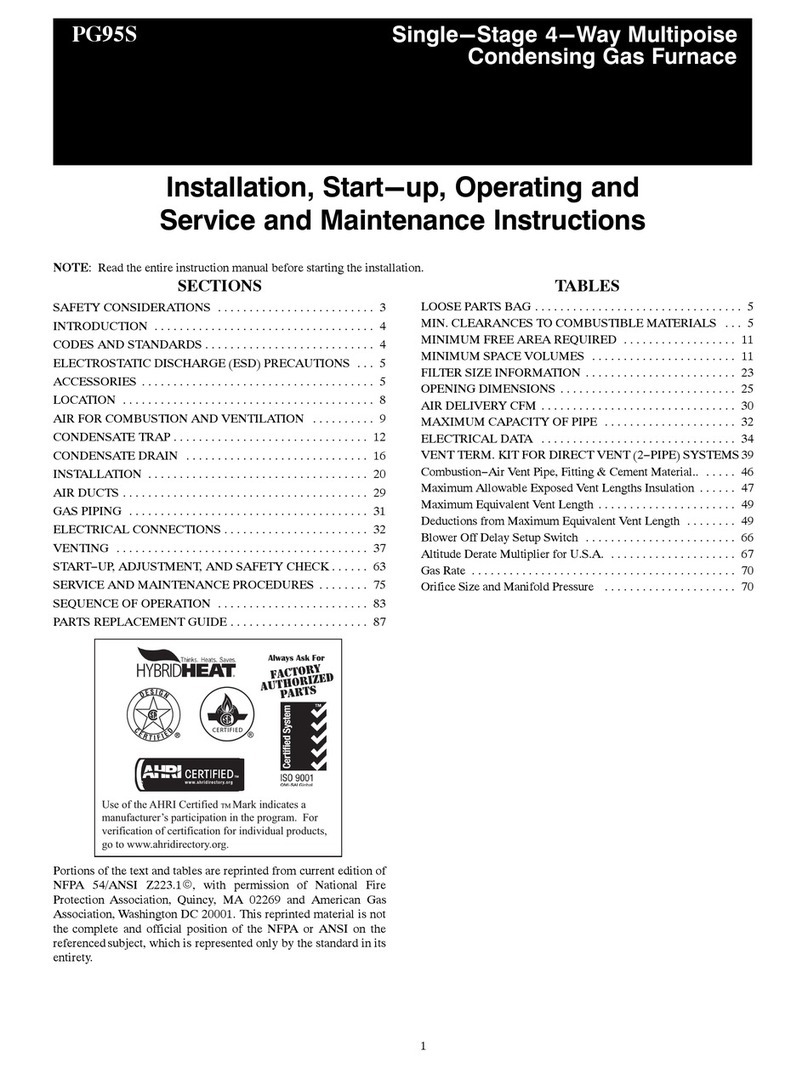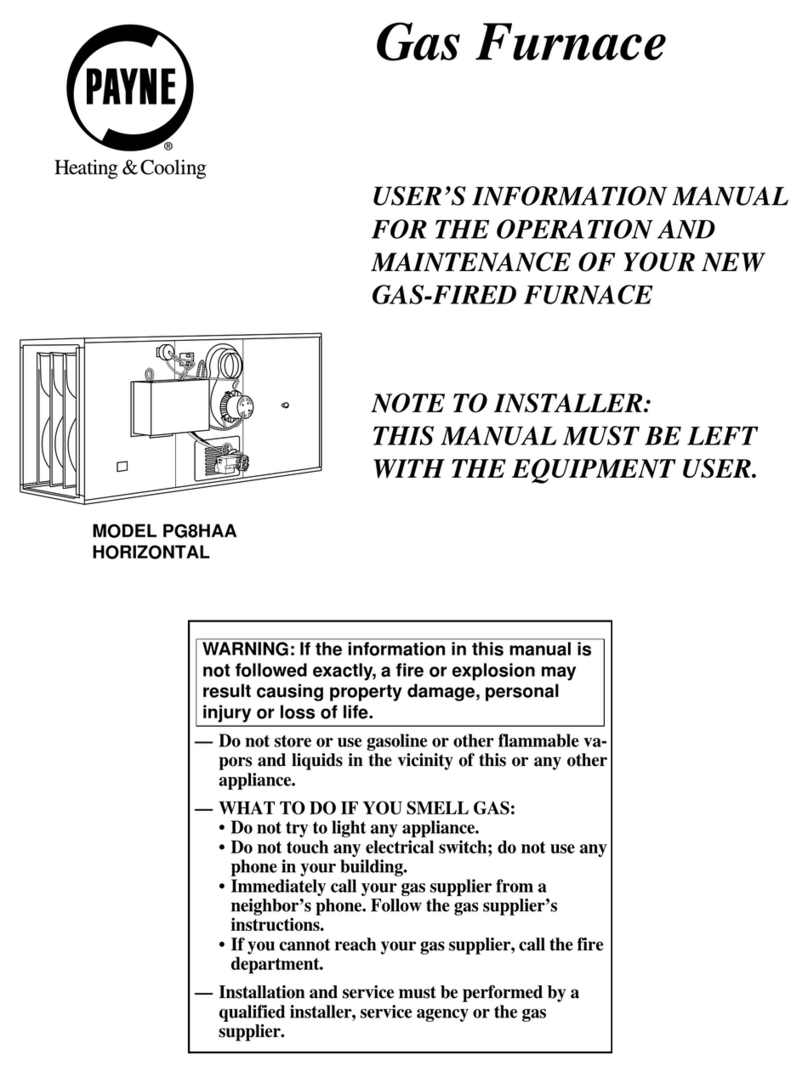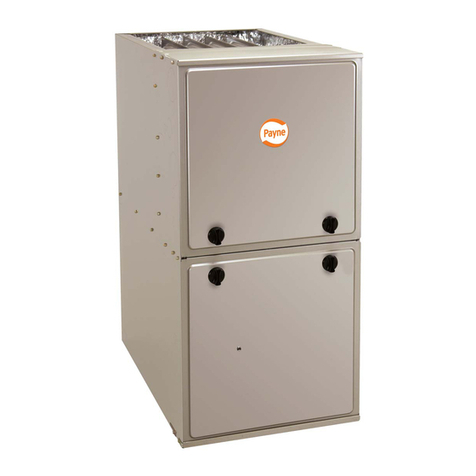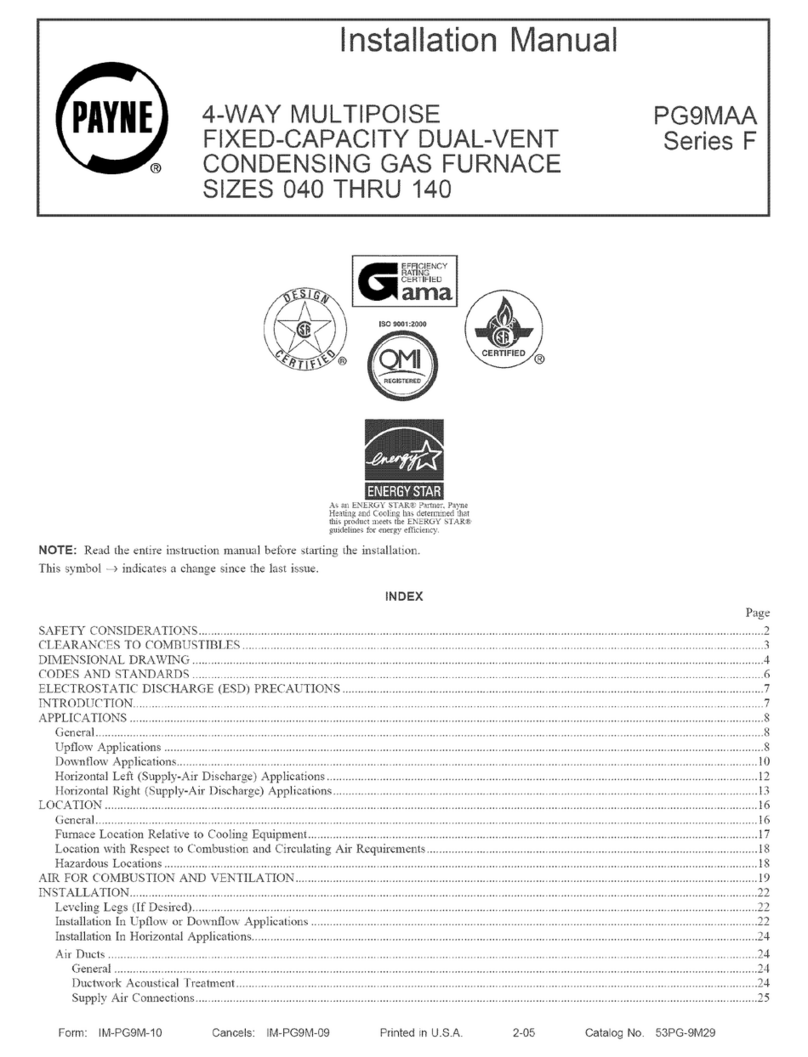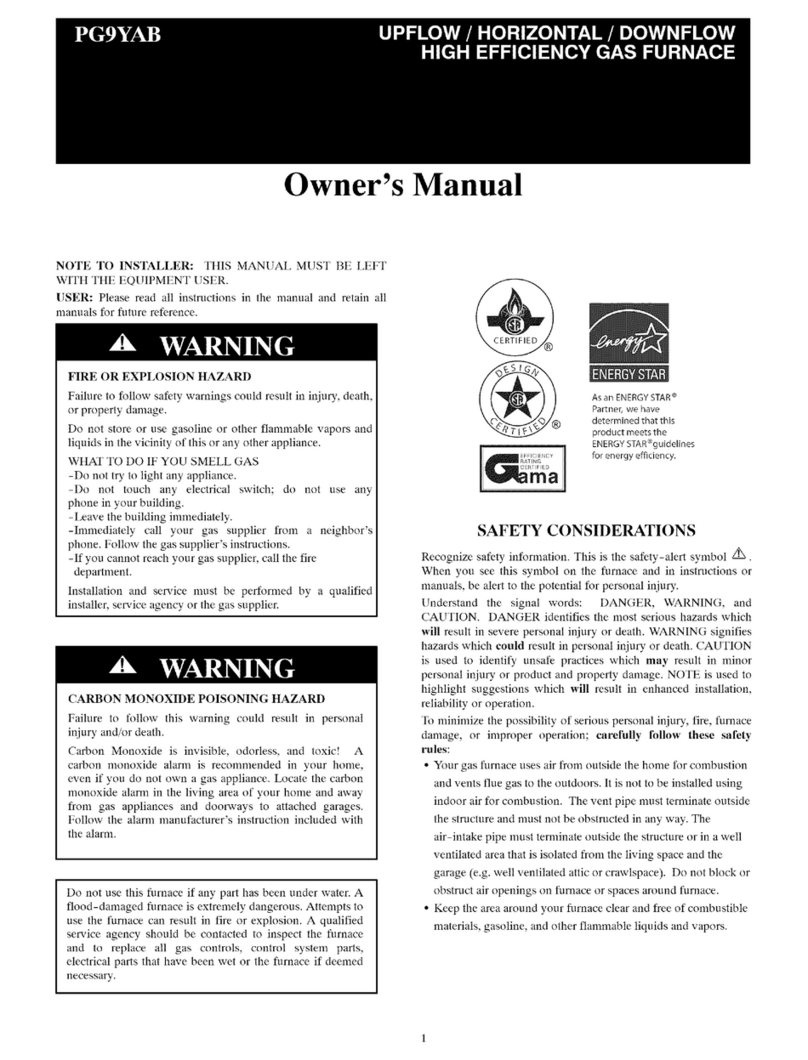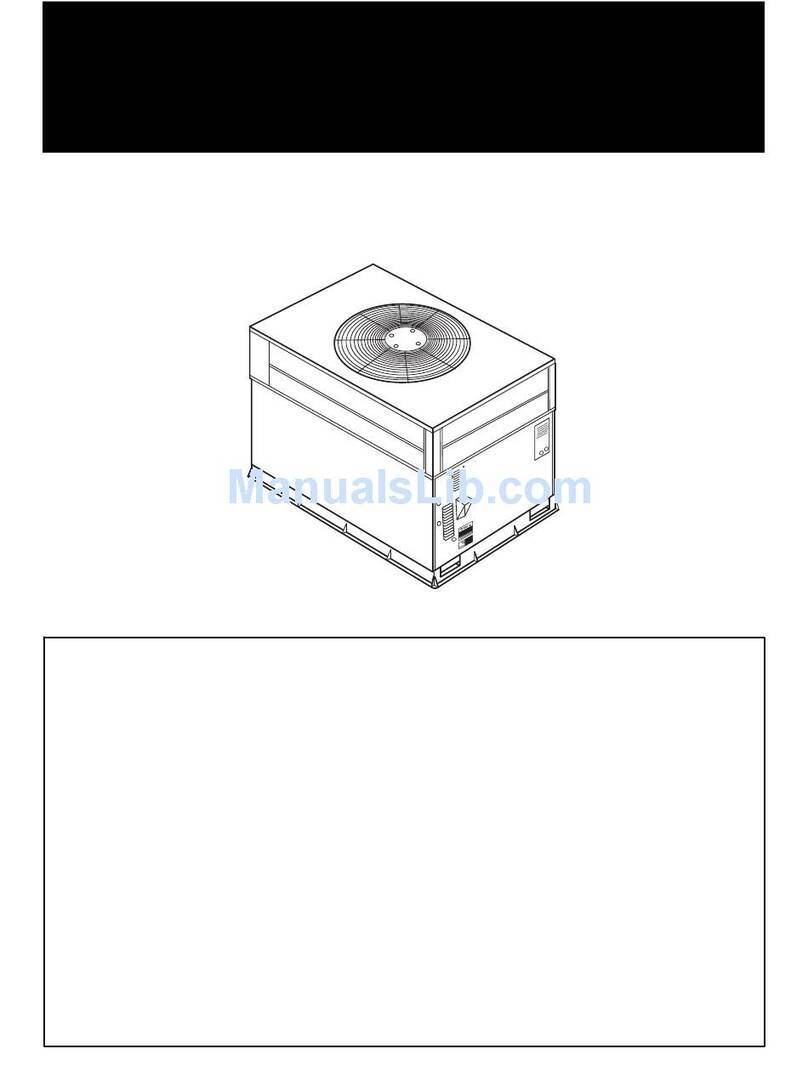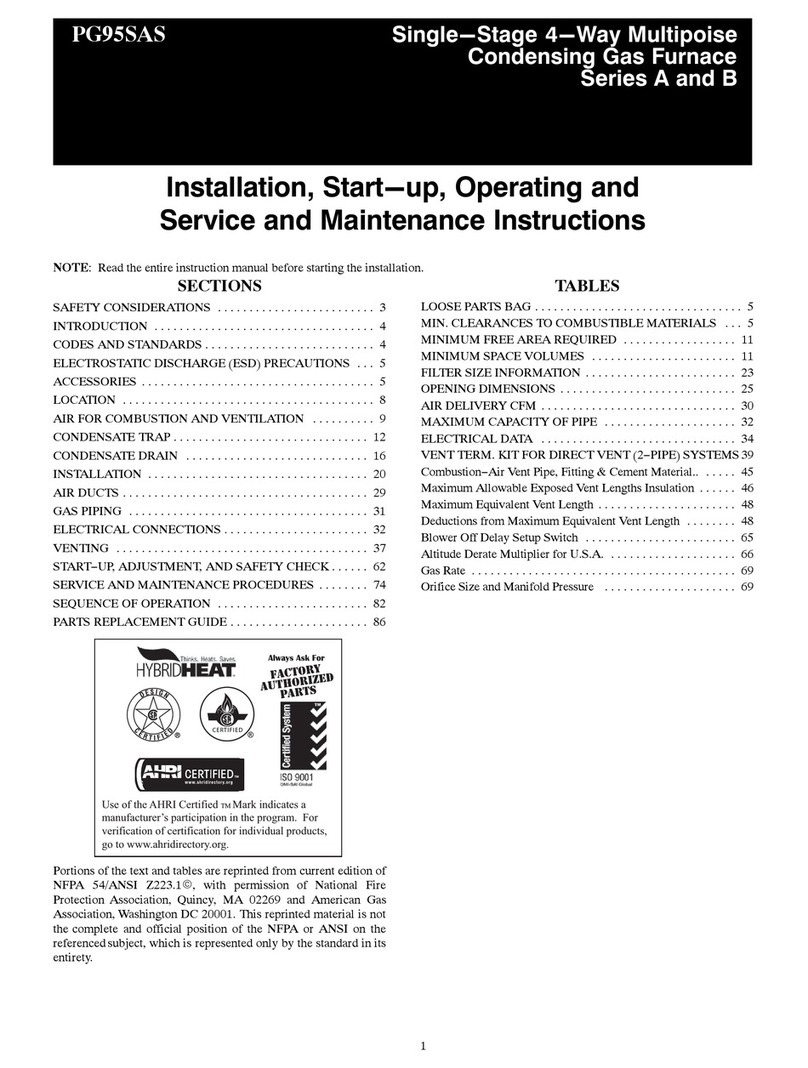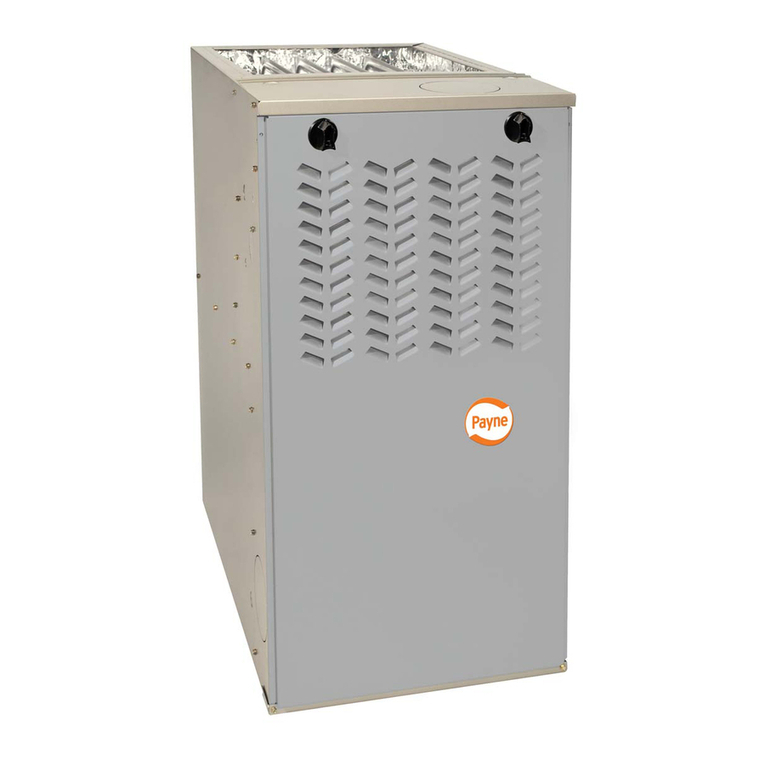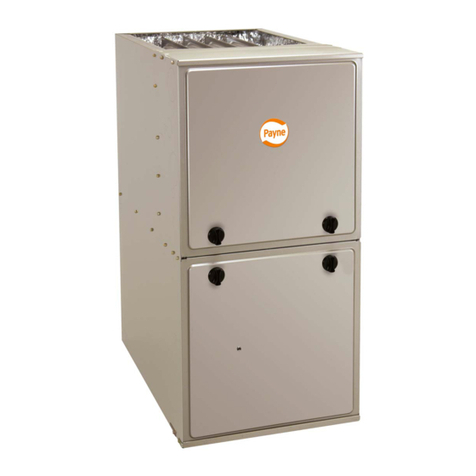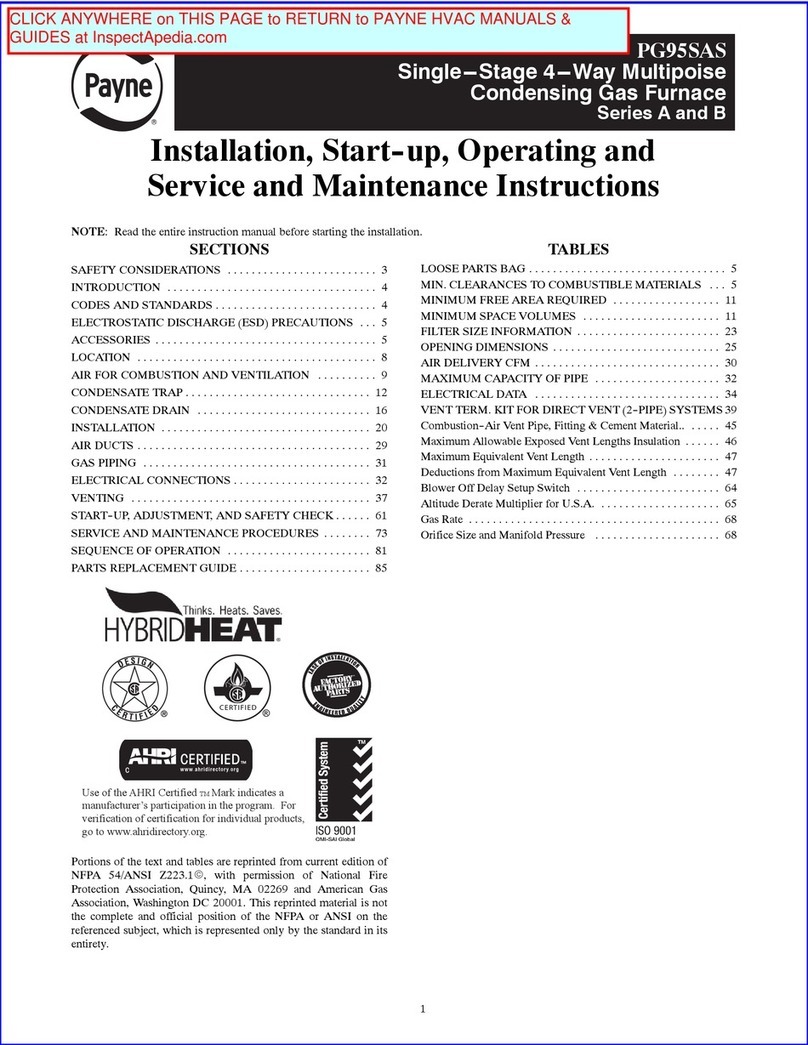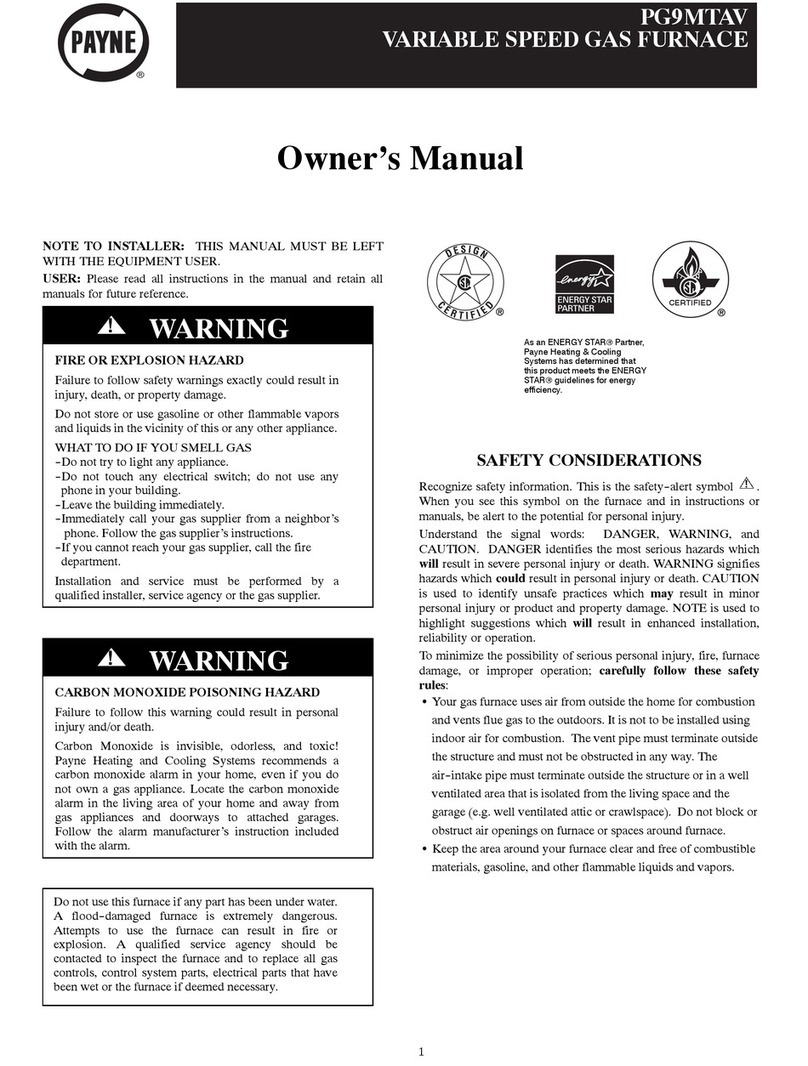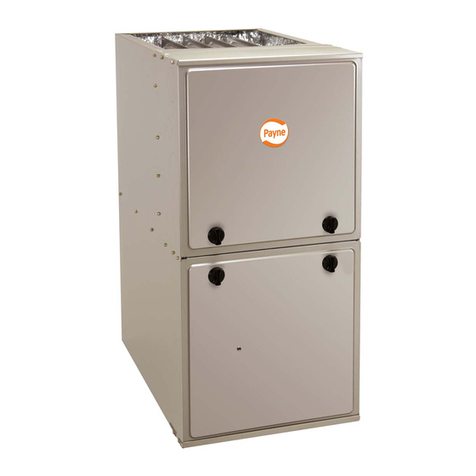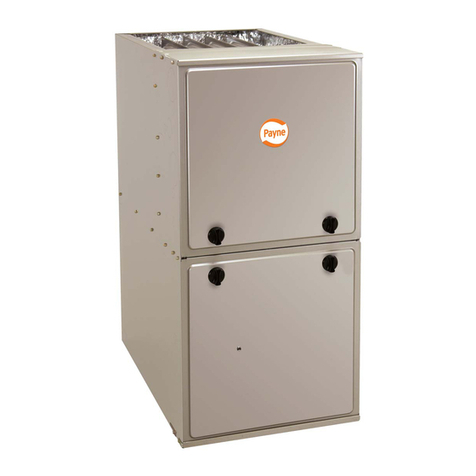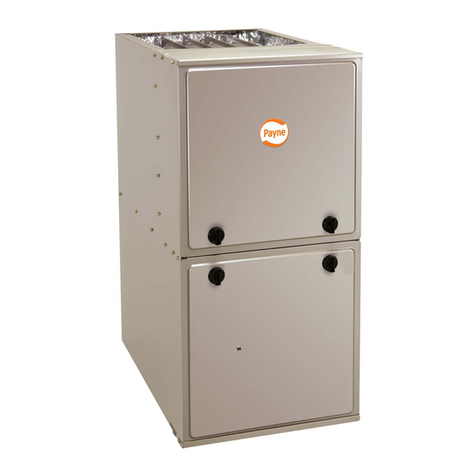
SAFETY CONSIDERATIONS
Installing and servicing of heating equipment can be hazardous due
to gas and electrical components. Only trained and qualified
personnel should install, repair, or service heating equipment.
Untrained personnel can perform basic maintenance flmctions such
as cleaning and replacing air filters. All other operations must be
performed by trained service personnel. Observe safety precautions
in this manual, on tags, and on labels attached to the furnace and
other safety precautions that may apply.
Recognize safety information. This is the safety-alert symbol /_.
When you see this symbol on the furnace and in instructions or
manuals, be alert to the potential for personal injury.
Understand the signal words DANGER, WARNING, CAUTION,
and NOTE. DANGER, WARNING, and CAUTION are used with
the safety-alert symbol. DANGER identifies the most serious
hazards which will result in severe personal injury or death.
WARNING signifies hazards which could result in personal injury
or death. CAUTION is used to identify unsafe practices which
may result in minor personal injury or product and property
damage. NOTE is used to highlight suggestions which will result
in enhanced installation, reliability, or operation.
To minimize the possibility of serious personal injury, fire, damage
to your furnace, or improper operation, carefully follow these
safety rules which apply to both direct-vent and non-direct vent
applications:
• Your new gas furnace may have been installed in 1 of 2 ways, as
a direct-vent (2-pipe) application or as a non-direct vent
(1-pipe) application.
• In a direct-vent (2-pipe) application, your furnace uses air from
outside the home for combustion and vents flue gas to the
outdoors. This type of application will have 2 pipes running
from the furnace to the outdoors. In this application, the vent and
air-intake pipes must terminate outside the structure and must
not be obstructed in any way. Do not block or obstruct air
openings on furnace or spaces around furnace.
• In a non-direct vent (1-pipe) application, your furnace uses air
from adjacent to the furnace for combustion and vents flue gas
to the outdoors. This type of application will have only 1 pipe
running from the furnace to the outdoors. The other pipe will
terminate in the same space as the furnace and is the source of
combustion air for your furnace. Therefore, the furnace must not
be enclosed in an airtight room or be sealed behind solid doors.
It must have adequate airflow for efficient combustion and safe
ventilation. Do not obstruct the combustion-air pipe in any way.
The vent pipe must terminate outside the structure and must not
be obstructed in any way. Do not block or obstruct air openings
or space around furnace.
FIRE HAZARD
Failure to follow warnings could result in personal injury,
death, or property damage.
Keep insulation clear of furnace and maintain clearances
shown on unit clearance label.
Keep the area around your furnace clear and free of combustible
materials, gasoline, and other flammable liquids and vapors.
• Do not cover the furnace, store trash or debris near it, or in any
way block the flow of fresh air to the unit.
• In addition to the safety rules above, make sure that the
following combustion-air requirements are met for non-direct
vent applications:
• Combustion air must be clean and uncontaminated with chlorine
or fluorine. These compounds are present in many products
around the home, such as: water softener salts, laundry bleaches,
detergents, adhesives, paints, varnishes, paint strippers, waxes,
and plastics.
• Make sure the combustion air for your furnace does not contain
any of these compounds. During remodeling be sure the
combustion air is fresh and uncontaminated. If these compounds
are burned in your furnace, the heat exchangers may deteriorate.
• A furnace installed in an attic or other insulated space must be
kept free and clear of insulating material. Examine the furnace
area when the furnace is installed or when insulation is added.
Some insulation materials may be combustible.
• Should the gas supply fail to shut off or if overheating occurs,
shut off the gas valve to the furnace before shutting off electrical
supply.
This furnace contains SAFETY DEVICES which must be
MANUALLY RESET. If the furnace is left unattended for an
extended period of time, have it checked periodically for proper
operation. This precaution will prevent problems associated with
no heat, such as frozen water pipes, etc. See "Before You Request
Service Call" section in this manual.
FIRE, EXPLOSION HAZARD
Failure to follow this warning could result in iniury, death, or
property damage.
Do not keep combustible materials, gasoline, and other
flammable liquids or vapors around your furnace.
CARBON MONOXIDE POISONING AND FURNACE
OPERATION HAZARD
Failure to follow this warning could result in personal injury,
death, or unit damage.
For proper and safe operation the furnace needs air for
combustion and ventilation. Do not block or obstruct air
openings on the furnace, air opening to the area in which the
furnace is installed, and the space around the furnace.
BEFORE STARTING YOUR FURNACE
Examine the furnace installation to determine that:
1. All flue gas carrying areas external to the furnace (i.e. china-
ney, vent connector) are clear and free of obstructions.
2. The vent connector is in place, slopes upward and is physic-
ally sound without holes or excessive corrosion.
3. The return-air duct connection(s) is physically sound, is
sealed to the furnace casing, and terminates outside the
space containing the furnace.
4. The physical support of the furnace is sound without sag-
ging cracks, gaps, etc. around the base.
5. There are no obvious signs of deterioration of the furnace.
6. The burner flames are in good adjustment, See Fig. 1 (by
comparison with pictorial sketches or drawings of the main
burner flame and, if applicable, the pilot burner flame).
